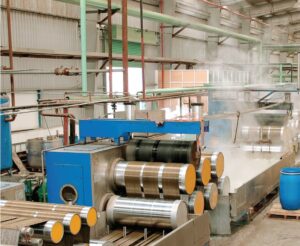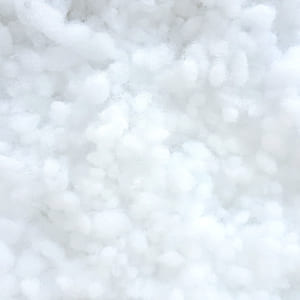There are many ways to determine the quality of yarn and ensure stadardization in textile manufacturing. Determining the Denier is one of them. Other quality standards for fiber maturity, twist, yarn count, tensile strength, abrasion resistance, etc are useful but this direct method of determining the quality of the yarn is needed for standardizing the yarn’s performance in terms of thickness and fineness.
Denier is a unit of textile measurement as per Wikipedia. It is an international system of measuring the weight of yarns and fibers – a type of yarn numbering system.
Denier is used to measure the quality of yarn of silks, and all manufactured fibers (both filament and staple – usually that of rayon, acetate, and nylon). It is the unit of measuring the weight of a yarn. It is a weight per unit per unit length value.
A denier is equal to the mass in grams per 9,000 meters of thread.
The denier size is an important component that has to be mentioned when selling yarns, along with number of filaments in the yarn and the twist.
In a multifilament yarn this numbering system will be mentioned along with other standards in this way – A/B/C – in which A will be the denier, B will be the number of filaments in the yarn and C will be the number of twist per meter.
Similar yarns among a fabric type can be classified into denier groups. This is helpful in categorising the fabric. Using the same denier yarns in textile production will result in even fabric.
Classification of yarn properties
Heavy vs light?
A low denier represents a lighter thread size, and a high denier represents a heavier thread size. If you have two fibers, A & B and A has double the Denier of B, you can be sure that A will be double the weight of B.
Soft vs rough?
Denier defines the mass density of the fibers that the fabric is made of and can indicate the fineness of the fiber. Higher the denier number coarser the yarn.
Low denier fabrics are more pliable, soft and drapey than higher denier fabrics. They will be light weight. High denier fabrics will be more durable and stronger but heavier and rougher.They will give more warmth.
Light vs opaque?
Denier is also an indication of the level of transparency of a fabric. Low denier fabrics ( with denier 5-30) are sheer, lightweight fabrics. 40+ denier knits are considered opaque. This is usually used in hosiery. A low denier stocking of 7 or higher will be extra sheer and used to make sheer stockings.
There are some variables. The property values of monofilament yarn and multifilament yarn of the same denier will be different so cannot be compared. And for the same denier of the same fabric type a continuous filament yarn will be stronger a staple yarn
Examples of Denier in textile fibers
A strong monofilament yarn of manufactured fiber of workable quality will be expected to have an average denier of 14.1 but that doesnot mean that those having higher or lower denier are better or worse.
A microfiber (the finest of fibers) is less than 1.0 denier. This means that if you weigh 9,000 meters of this fiber, it would weigh less than 1 gram. This type of fiber which is less than 1 denier per filament is called microdenier.
A super fine silk fiber can be as fine as 1 denier. But normally silk fibers are in the range of 12-20. Chiffon fabric maybe made of fine 50 denier yarns.
Among nylons, sheer lightweight nylon will be of denier 14. A thicker nylon will have a denier of 40.0 and above. Ballistic nylon is a thick nylon material which is very durable and abrasion resistant. The denier of ballistic material can be upto 2000
Good quality rayon yarns are usually seen in a range of 100-250
Alternative to Denier
Tex is an alternative and a new measurement unit and it tells you how many grams a 1000 m long fiber weighs (1 tex = 1 g / 1000 m).
Reference : Fabric for Fashion – Laurence King ; Learn more about standards of textiles from the American Society for Testing and Materials




